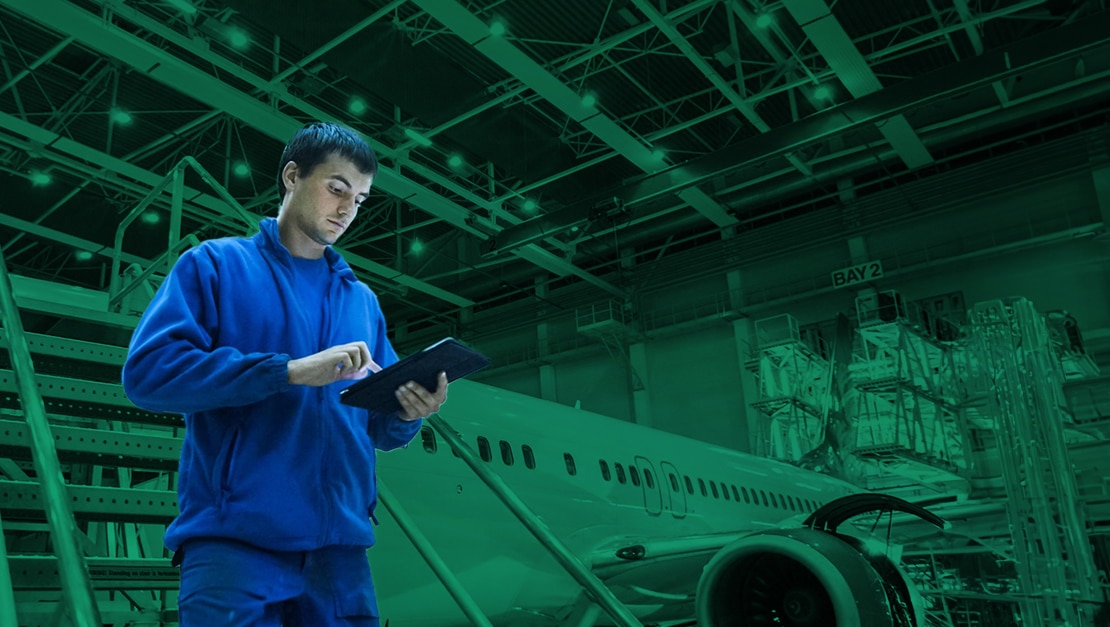Voice-directed warehousing (VDW) systems enable companies to optimize traditional warehousing operations through the use of voice technology. With VDW systems, daily warehouse tasks can be made a lot more accurate and efficient by eliminating the need for paper-based or handheld systems, allowing companies to improve productivity, reduce errors, and enhance effectiveness.
For companies to be able to meet evolving consumer demands and stay competitive, VDW is essential to facilitate process optimization, empowering warehouses to improve inventory management, become more cost-effective, and enhance employee performance.
Made up of voice recognition technologies, warehouse management systems (WMS), and wearable devices such as headsets, VDW allows employees to work hands-free to encourage better speed and precision. As we’ll see in this blog post, voice-directed warehousing has the potential to revolutionize traditional warehousing processes by making them more accurate, efficient, and responsive to consumer needs.
What Is Voice-Directed Warehousing? Understanding How it Works
Relying on a combination of software and hardware, voice-directed warehousing helps workers through the use of voice recognition technology. By sending instructions digitally through voice and receiving verbal confirmation of completed tasks, VDW systems can help warehouse workers with picking items, order fulfillment, taking stock of inventory, and more.
VDW systems usually require employees to wear a headset or voice-enabled device and rely on speech recognition software to convert spoken commands into data and speech synthesis software to convert data into spoken responses or instructions. For example, systems can provide information to workers, such as the precise location of an item to be picked, and workers can report when that item has been picked successfully. When integrated with a WMS, warehouse teams can better ensure seamless communication between workers and computers.
Applications of Voice-Directed Warehousing
VDW systems are on pace for substantial growth. The VDW solutions market is projected to reach US $5.7 billion in 2024 and grow to US $24.52 billion by 2034, representing a CAGR of 15.7%. This growth is propelled by the powerful and meaningful applications of voice technology in warehousing that enable teams to work more productively across various industries, such as food and beverage, transportation and logistics, pharmaceuticals, and more. VDW systems can be applied to different workflows to ensure processes are optimized. Here are a few ways voice-directed warehousing is applied today.
Picking and Packing
VDW optimizes picking and packing processes with real-time hands-free guidance on the warehouse floor. Voice technology can direct workers to the exact location of items they need to pick to cut down on search time and improve accuracy. Workers then confirm verbally to ensure each item is picked correctly.
Inventory Management and Cycle Counting
Another way VDW streamlines processes is by applying it to inventory counts in real time as items are picked or restocked. This provides real-time visibility into inventory levels and reduces the need for manual counts while simultaneously keeping the WMS updated and accurate.
Quality Control
Quality control processes can also benefit from VDW systems as voice technology enables workers to perform quality checks at multiple points in a process. With voice technology, employees can ensure a product meets quality standards before it’s shipped and facilitates immediate reporting of discrepancies, reducing the likelihood of shipping or inventory errors.
Real-time Reporting and Analytics
VDW systems provide immediate insights into various performance metrics, like picking rates, accuracy rates, and productivity. This data can be used to identify areas for improvement or further optimize workflows while providing real-time reports for stronger decision-making.
The Benefits of Using Voice-Directed Warehousing Systems
Voice-direction solutions offer warehousing teams several benefits related to enhancing existing operations and implementing new ones that help increase productivity. Let’s have a look at some of the main benefits VDW systems can offer.
Increased Productivity
VDW solutions can increase productivity by eliminating paper-based instructions or handheld devices that can get in the way. Voice commands enable workers to keep their hands and eyes free so they can work more quickly on tasks like picking and packing, inventory management, and more. According to research, warehouse worker productivity increased by 15.6% after organizations adopted voice-based solutions.
Error Reduction
With real-time instructions on where to locate an item to be picked, VDW solutions reduce the likelihood of errors, leading to more accurate order fulfillment. Not only does this result in improved customer satisfaction, but it can also reduce costs related to returns.
Enhanced Safety and Employee Satisfaction
VDW simplifies tasks and reduces physical strain on employees, leading to happier and safer workers. Employees can focus on the task at hand without carrying around checklists, manuals, or devices, creating a more comfortable work environment.
ROI and Cost Savings
VDW systems can result in significant cost savings and high return on investment thanks to increased productivity and accuracy. This leads to lower labor costs and reduced operational expenses, helping warehouses process more orders in less time.
Implementing Voice-Directed Warehousing Systems
Like any new technology adoption, VDW systems require meticulous planning and preparation to ensure smooth implementation.
If you’re considering adopting a VDW system, there are best practices to consider before beginning implementation:
- Conduct a detailed analysis of your existing warehouse processes to identify areas where VDW can be the most beneficial
- Involve key stakeholders such as warehouse managers, IT team members, and workers to ensure a smooth transition to a new system
- Ensure a new VDW system is compatible with your WMS to ensure continued smooth operation and data synchronization
- Establish a hands-on and continuous training program for warehouse staff and supervisors and how to use voice-enabled devices properly, follow voice instructions, and adapt to the new workflow
- Set realistic implementation timelines and allow for enough time for thorough testing before a new VDW system is fully deployed
- Regularly collect and monitor feedback from employees and other stakeholders to identify issues and ensure successful voice-directed warehousing implementation
Voice-Directed Warehousing or a Speech AI Solution?
VDW systems may seem like the best solution for your warehouse, however, they’re not the only option for implementing voice technology to boost productivity. While VDW technology is great for accomplishing certain tasks, like picking items for orders or streamlining inventory management, they don’t often apply to the wider range of warehousing tasks. Speech artificial intelligence (AI), on the other hand, has the ability to transform almost any warehousing process.
Speech AI technology, like aiOla, allows warehousing teams to harness the power of speech for multiple workflows. The technology is a lot more versatile, enabling teams to improve processes related to machine maintenance, pallet processing, order picking, data collection, and more. Relying on technologies such as natural language processing (NLP), speech AI can understand and respond to natural language commands, facilitating seamless communication between man and machine.
Additionally, speech AI solutions can integrate with various systems and applications beyond just WMS, such as customer service and analytics software, offering a more comprehensive solution for warehouse management. Indeed, speech AI technology like aiOla allows logistics and warehousing teams to alert staff to critical issues, improve predictive maintenance needs, inventory discrepancies, and complete inspections entirely by speaking. Otherwise lost speech data can be collected in real-time to drive essential decision-making and process improvement.
It’s important to compare VDW systems with speech AI based on what your warehouse team needs, for example:
- Task complexity: For more diverse and complex tasks requiring natural language understanding (NLU), a speech AI solution can be more wide-reaching
- Integration needs: Speech AI solutions can offer a more seamless integration with existing warehouse legacy systems
- Cost consideration: VDW systems can be more cost-effective for specific tasks, but speech AI solutions offer greater versatility and will offer more cost benefits in the long run
Optimize Your Warehouse With Voice Technology
Whether you opt for a VDW system or a speech AI solution, there’s no denying that implementing voice technology into your daily logistics and warehouse workflows will benefit your productivity.
That said, even if you’re only looking for a simple voice picking system now, implementing speech AI can offer your business long-term advantages and space to grow according to industry changes. With solutions like aiOla, you’ll get a flexible system that fits and enhances your existing processes without disrupting your workflow, all while offering a sustainable way for your warehouse team to scale as their needs evolve.
Book a demo with one of our experts to see how aiOla’s speech AI solution can help your warehouse team work more productively.








